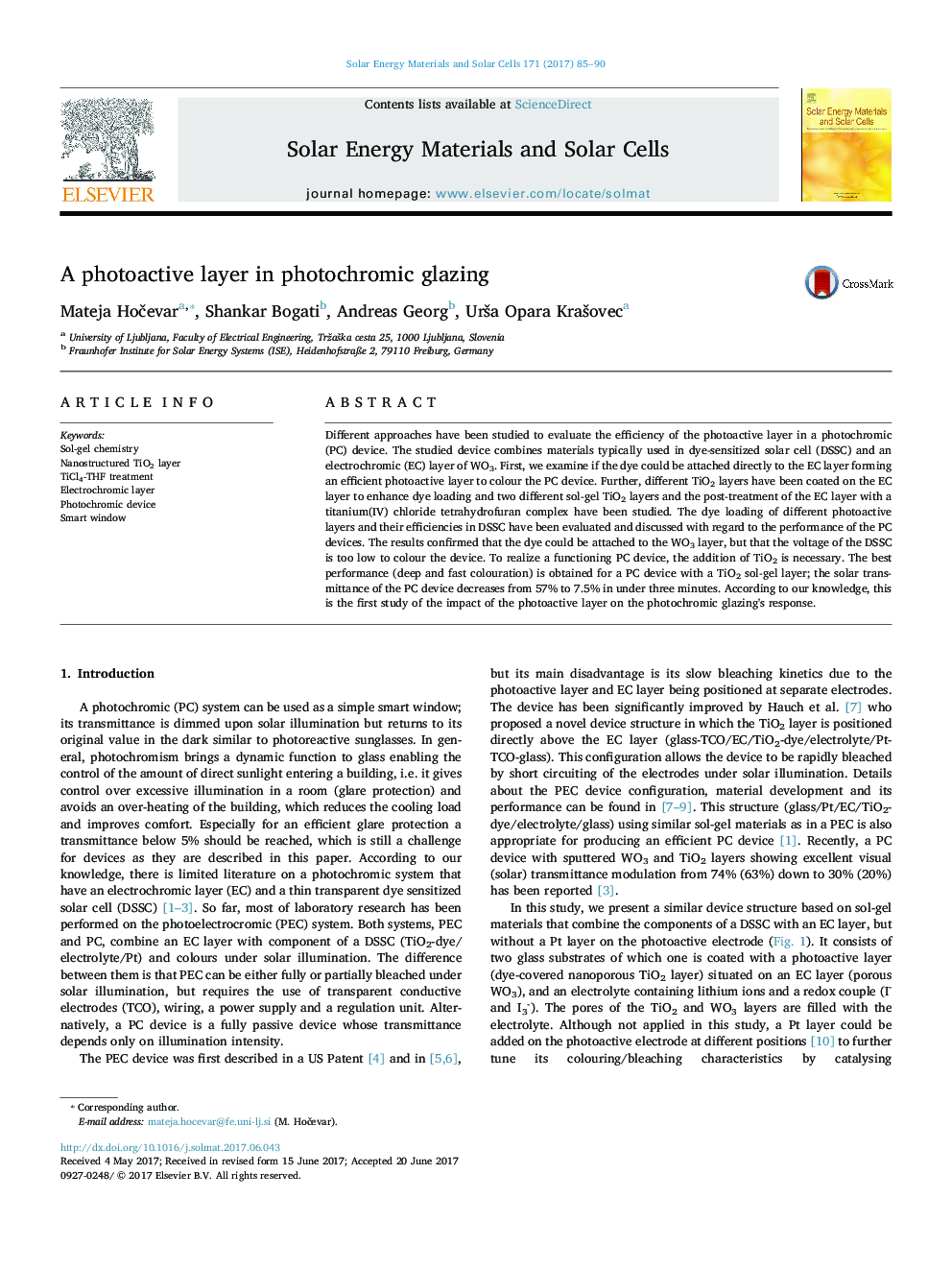| Article ID | Journal | Published Year | Pages | File Type |
|---|---|---|---|---|
| 4758698 | Solar Energy Materials and Solar Cells | 2017 | 6 Pages |
Abstract
Different approaches have been studied to evaluate the efficiency of the photoactive layer in a photochromic (PC) device. The studied device combines materials typically used in dye-sensitized solar cell (DSSC) and an electrochromic (EC) layer of WO3. First, we examine if the dye could be attached directly to the EC layer forming an efficient photoactive layer to colour the PC device. Further, different TiO2 layers have been coated on the EC layer to enhance dye loading and two different sol-gel TiO2 layers and the post-treatment of the EC layer with a titanium(IV) chloride tetrahydrofuran complex have been studied. The dye loading of different photoactive layers and their efficiencies in DSSC have been evaluated and discussed with regard to the performance of the PC devices. The results confirmed that the dye could be attached to the WO3 layer, but that the voltage of the DSSC is too low to colour the device. To realize a functioning PC device, the addition of TiO2 is necessary. The best performance (deep and fast colouration) is obtained for a PC device with a TiO2 sol-gel layer; the solar transmittance of the PC device decreases from 57% to 7.5% in under three minutes. According to our knowledge, this is the first study of the impact of the photoactive layer on the photochromic glazing's response.
Keywords
Related Topics
Physical Sciences and Engineering
Chemical Engineering
Catalysis
Authors
Mateja HoÄevar, Shankar Bogati, Andreas Georg, UrÅ¡a Opara KraÅ¡ovec,
